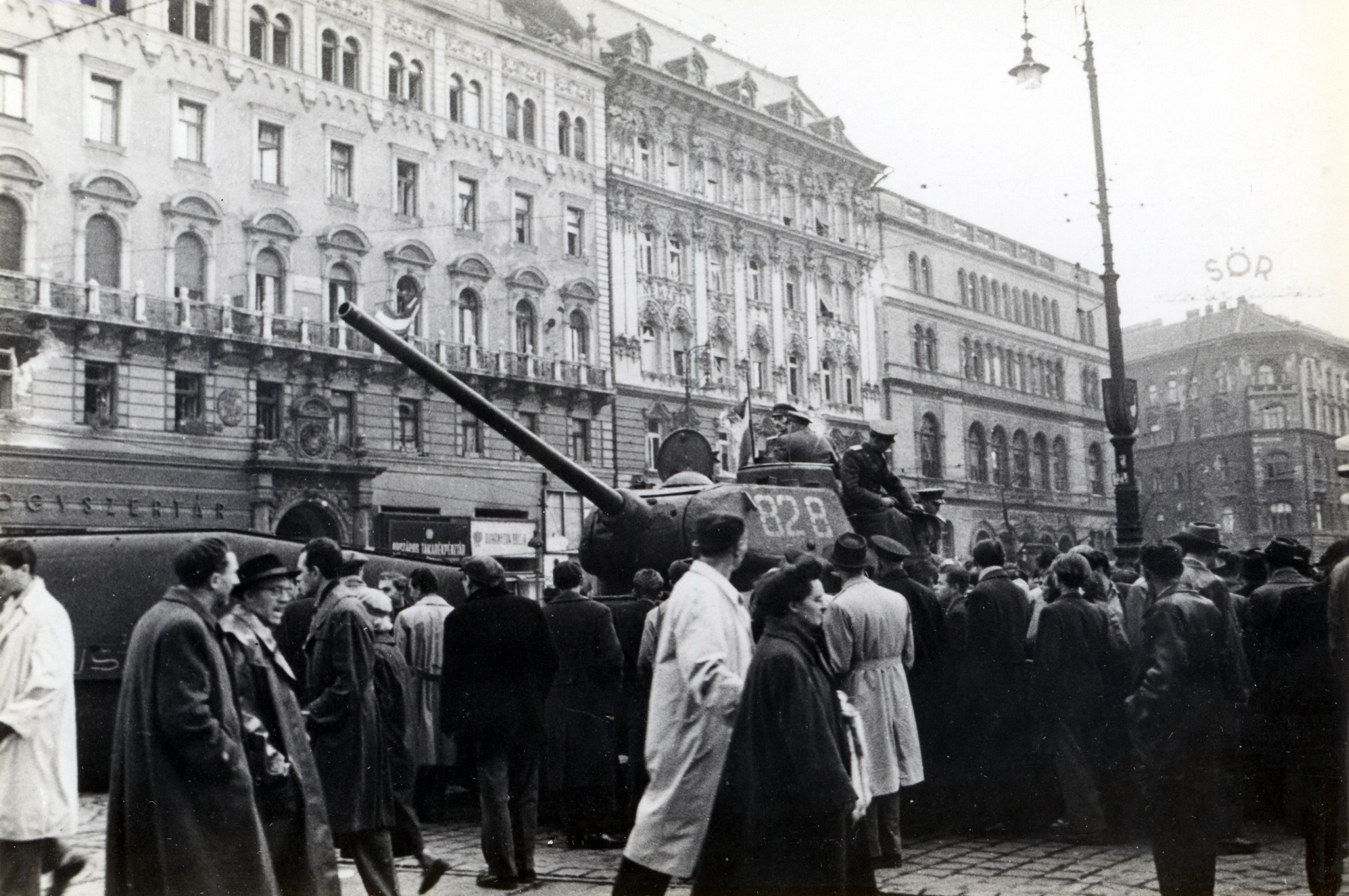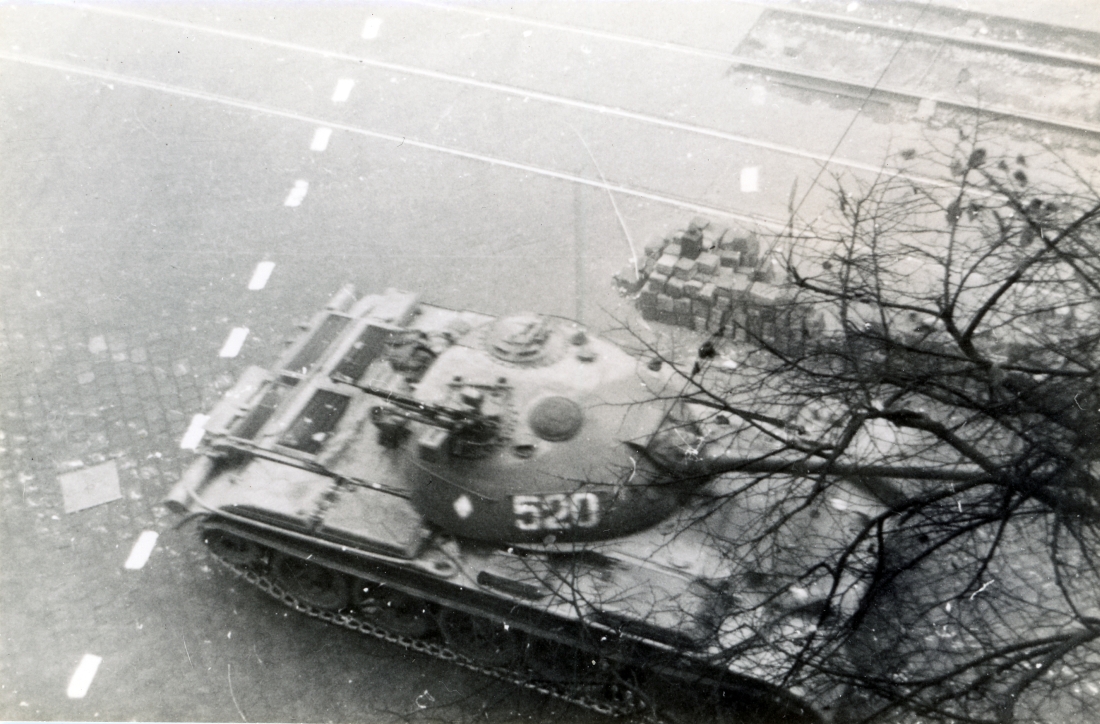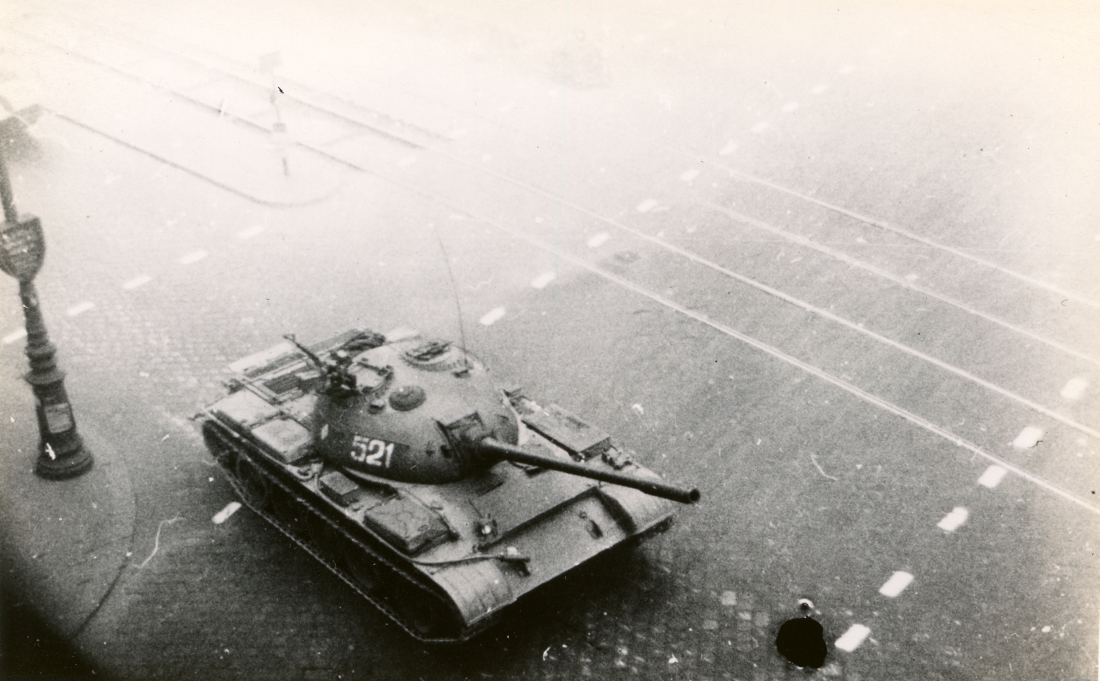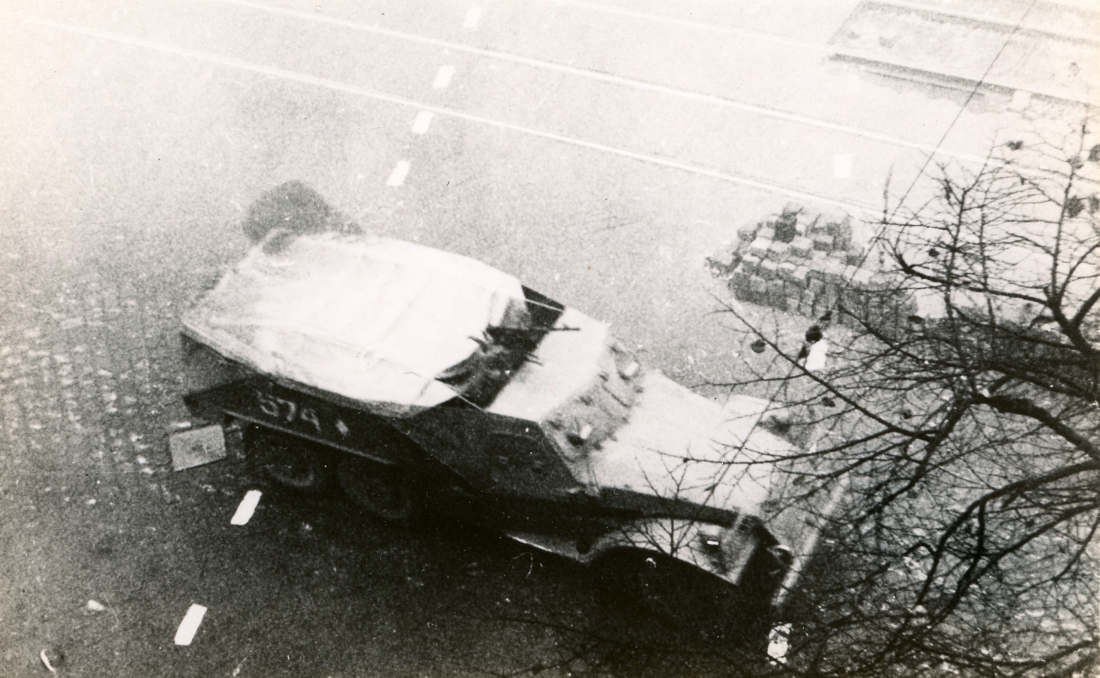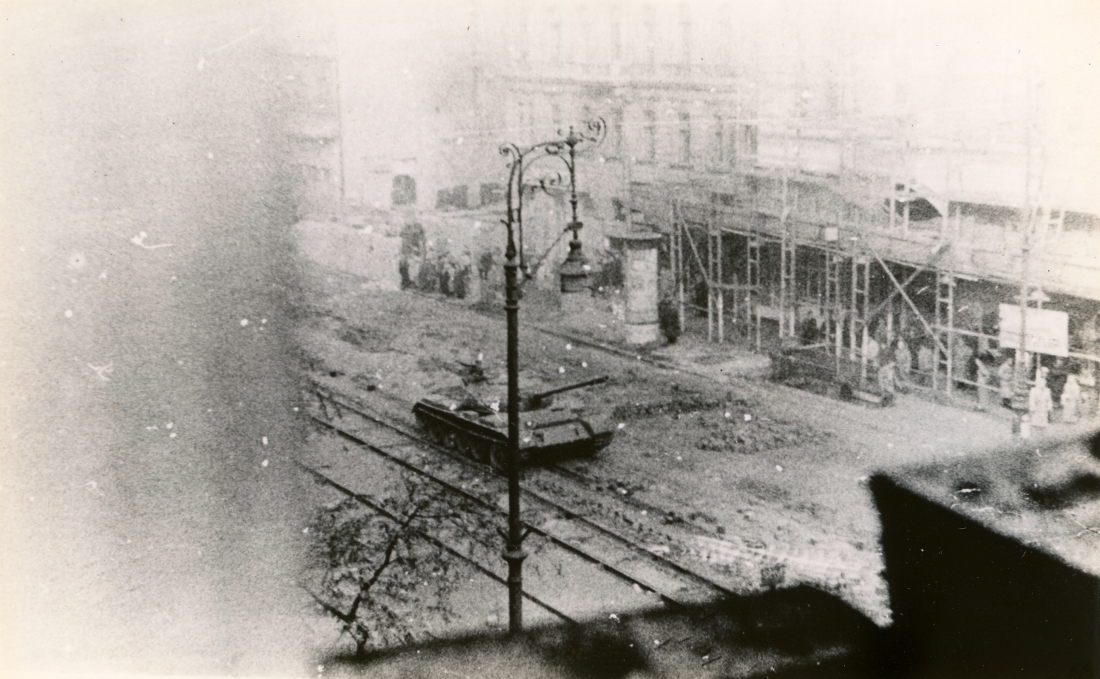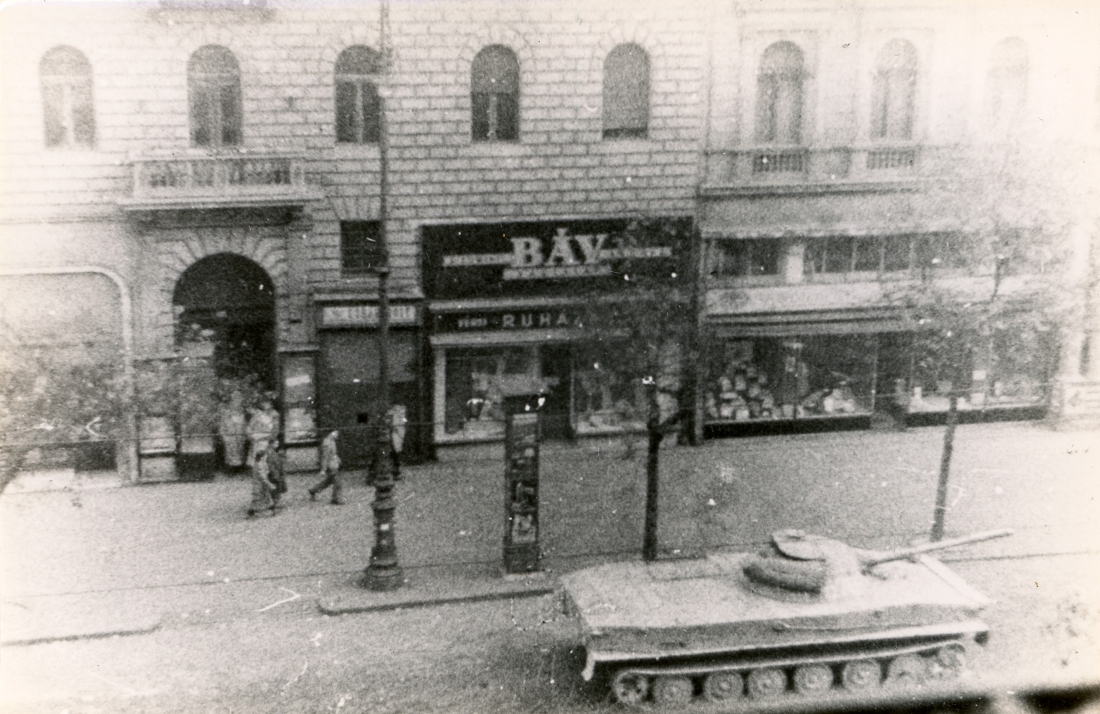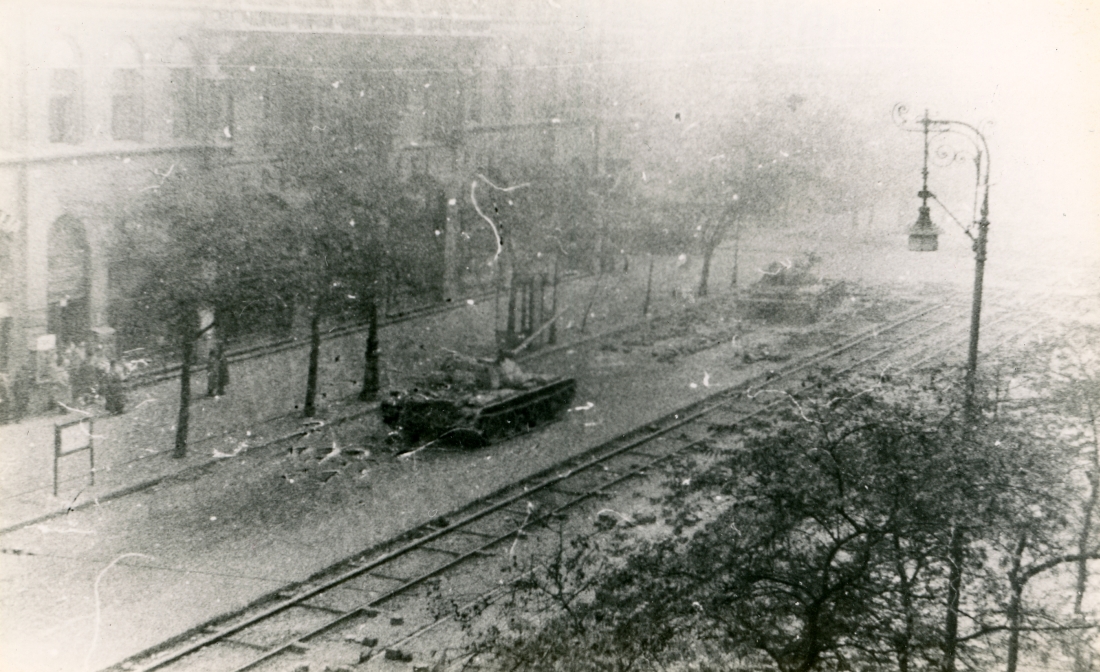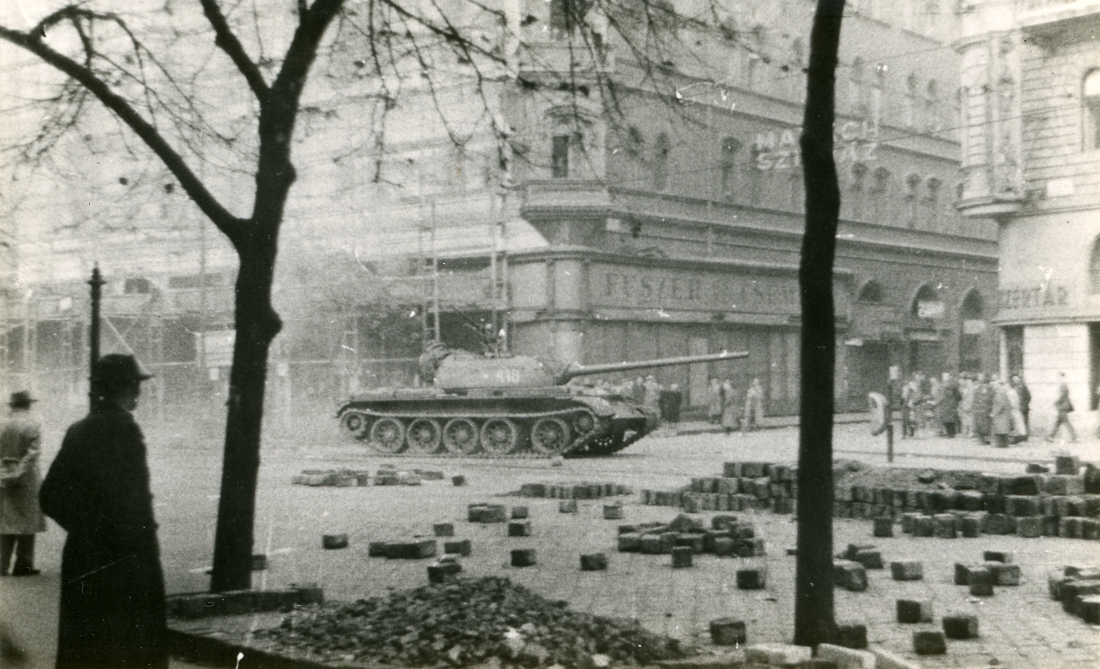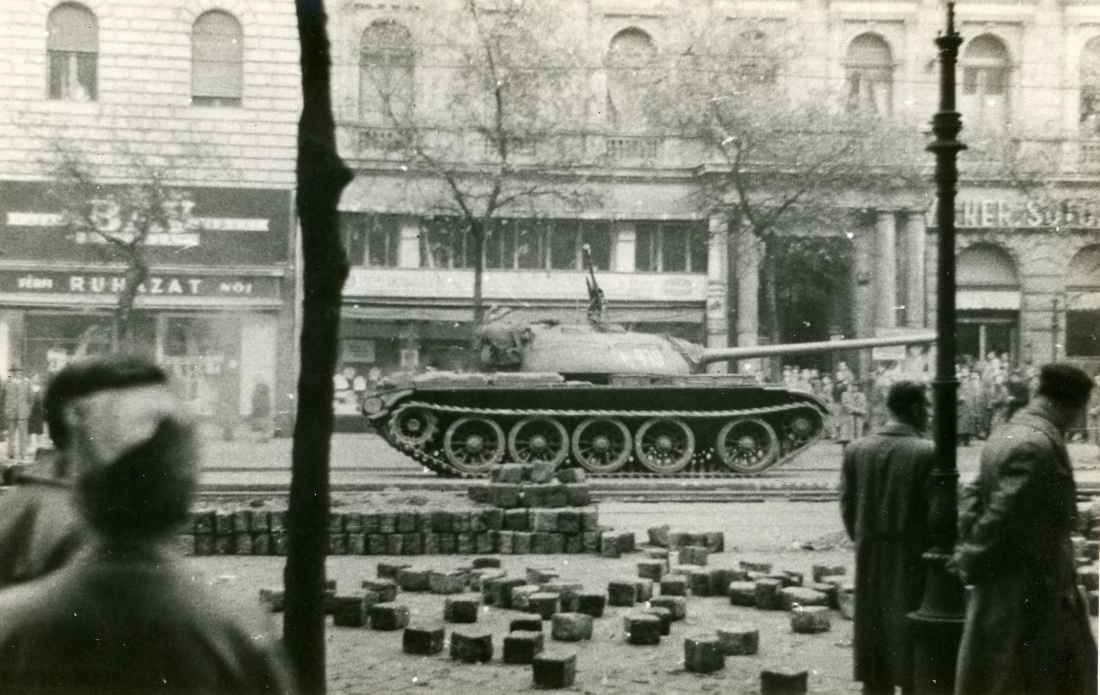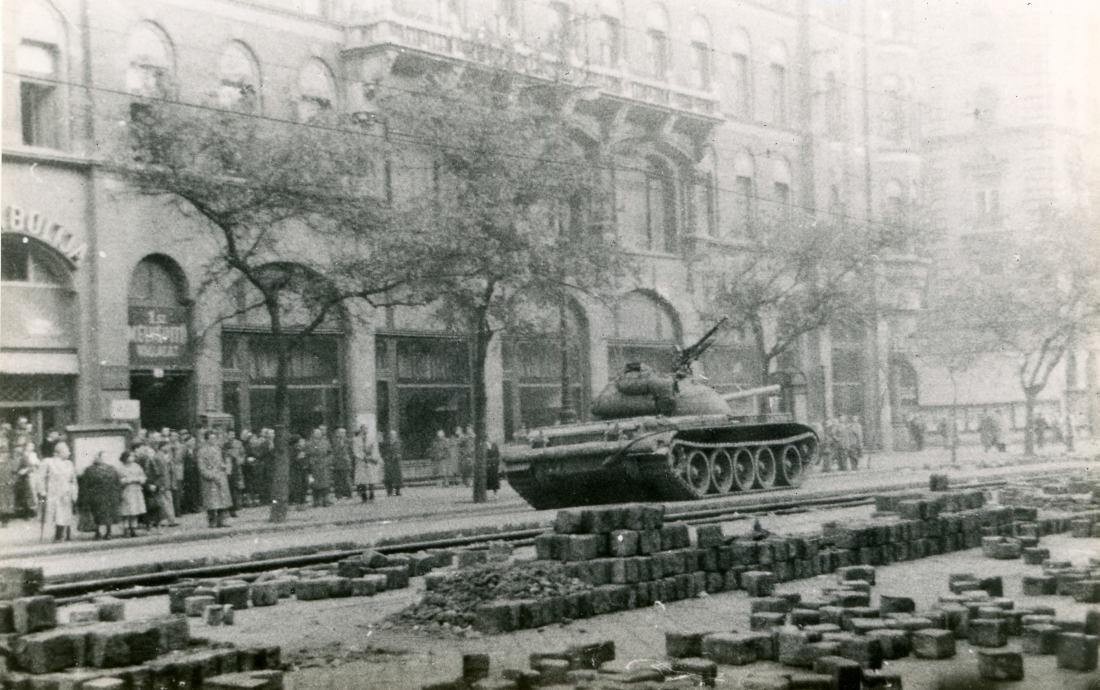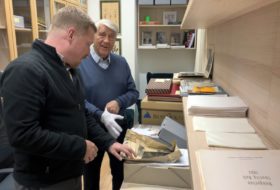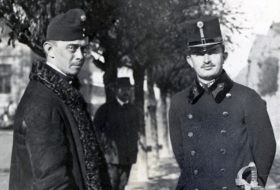Soviet tank surrounded by civilians at Blaha Lujza Square in Budapest
The recently discovered photographs were taken in Budapest, on the section of the Grand Boulevard (Nagykörút) between Wesselényi and Barcsay Streets. The photos reveal Soviet tanks rolling down streets, buildings along the boulevard, and a ruined street scene. The amateur photographer’s shots were initially taken from the window or balcony of an apartment somewhere on the corner of Wesselényi Street. Thus, the first pictures are seen from a perspective above the street, and then the photographer documented the scene walking down the boulevard towards Blaha Lujza Square. Bystanders and revolutionaries watch the military vehicles passing by on the streets. The building at 19 Erzsébet (Lenin) Boulevard, which was later demolished, can still be seen here in its complete state, including its balcony.
Soviet tanks photographed from the upper floor of the building at 28 Erzsébet (Lenin) Boulevard
Street views from the upper floor of the boulevard between Wesselényi and Barcsay streets
Photos taken at street level on the section of the boulevard between Wesselényi and Barcsay streets
The documents reveal nothing about the origin or creator of the photographs. We do not know exactly who sent them to Otto von Habsburg, but based on the sources, it can be assumed that they reached him through his correspondence with Hungarians living in exile. During the Hungarian Revolution of 1956, Otto von Habsburg immediately spoke out in support of the Hungarian people’s struggle for freedom. In international forums and Western political circles, he consistently opposed Soviet intervention, sought opportunities to provide assistance, and, after the revolution was crushed, urged support for Hungarian refugees. The newly discovered photographs are therefore not only of interest from a photographic history perspective, but also establish a symbolic connection with the life’s work of Otto von Habsburg. The images of the revolution represent the contrast between oppression and the desire for freedom – the ideological basis that defined Otto von Habsburg’s entire political and moral thinking.
The emergence of this series of photographs once again confirms that the collection of the Otto Habsburg Foundation is not only a place of dynastic remembrance, but also a multifaceted source of modern Hungarian history. Thus, these images can contribute to the preservation and further interpretation of the visual heritage of the Hungarian Revolution of 1956.
Szilveszter Dékány
